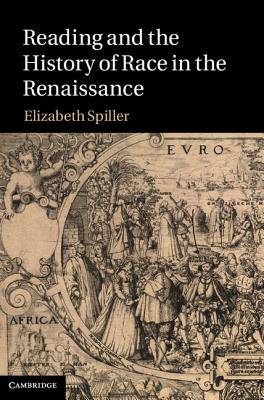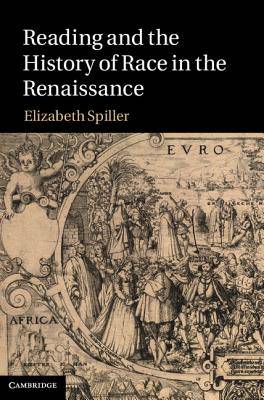
- Afhalen na 1 uur in een winkel met voorraad
- Gratis thuislevering in België vanaf € 30
- Ruim aanbod met 7 miljoen producten
- Afhalen na 1 uur in een winkel met voorraad
- Gratis thuislevering in België vanaf € 30
- Ruim aanbod met 7 miljoen producten
Zoeken
€ 93,95
+ 187 punten
Uitvoering
Omschrijving
Elizabeth Spiller studies how early modern attitudes toward race were connected to assumptions about the relationship between the act of reading and the nature of physical identity. As reading was understood to happen in and to the body, what you read could change who you were. In a world in which learning about the world and its human boundaries came increasingly through reading, one place where histories of race and histories of books intersect is in the minds and bodies of readers. Bringing together ethnic studies, book history, and historical phenomenology, this book provides a detailed case study of printed romances and works by Montalvo, Heliodorus, Amyot, Ariosto, Tasso, Munday, Cervantes, Burton, Sidney, and Wroth. Reading and the History of Race traces ways in which print culture, and the reading practices it encouraged, contributed to shifting understandings of racial and ethnic identity.
Specificaties
Betrokkenen
- Auteur(s):
- Uitgeverij:
Inhoud
- Aantal bladzijden:
- 264
- Taal:
- Engels
Eigenschappen
- Productcode (EAN):
- 9781107007352
- Verschijningsdatum:
- 20/06/2011
- Uitvoering:
- Hardcover
- Formaat:
- Ongenaaid / garenloos gebonden
- Afmetingen:
- 152 mm x 229 mm
- Gewicht:
- 521 g

Alleen bij Standaard Boekhandel
+ 187 punten op je klantenkaart van Standaard Boekhandel
Beoordelingen
We publiceren alleen reviews die voldoen aan de voorwaarden voor reviews. Bekijk onze voorwaarden voor reviews.











